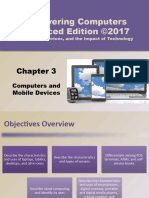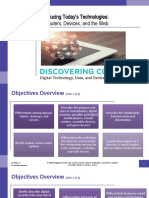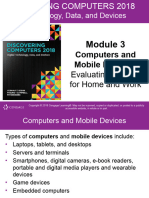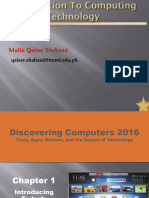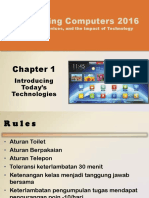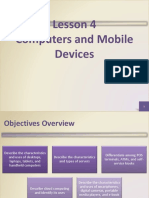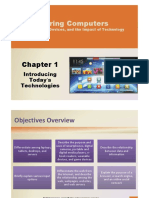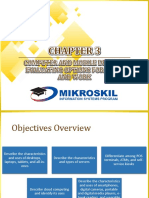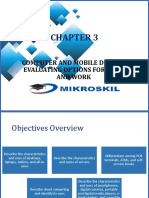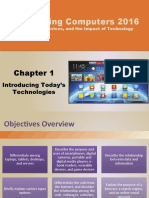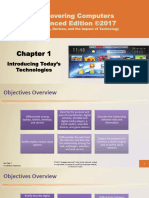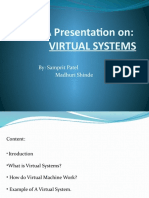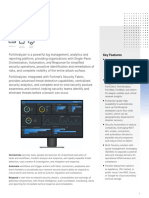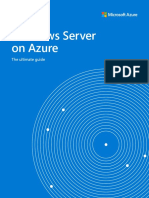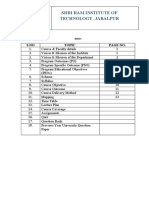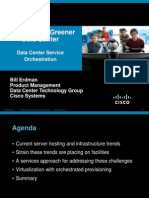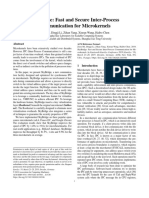0% found this document useful (0 votes)
14 views48 pagesChapter 03 2016
The document provides an overview of various types of computers and mobile devices, including laptops, tablets, smartphones, and servers, detailing their functions and characteristics. It also discusses the importance of ports and connections, protection measures for hardware, and health concerns related to technology use. Additionally, it covers topics such as cloud computing, virtualization, and the role of embedded computers in larger systems.
Uploaded by
Cabdulaahi CaliCopyright
© © All Rights Reserved
We take content rights seriously. If you suspect this is your content, claim it here.
Available Formats
Download as PPT, PDF, TXT or read online on Scribd
0% found this document useful (0 votes)
14 views48 pagesChapter 03 2016
The document provides an overview of various types of computers and mobile devices, including laptops, tablets, smartphones, and servers, detailing their functions and characteristics. It also discusses the importance of ports and connections, protection measures for hardware, and health concerns related to technology use. Additionally, it covers topics such as cloud computing, virtualization, and the role of embedded computers in larger systems.
Uploaded by
Cabdulaahi CaliCopyright
© © All Rights Reserved
We take content rights seriously. If you suspect this is your content, claim it here.
Available Formats
Download as PPT, PDF, TXT or read online on Scribd
/ 48
